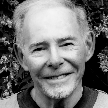From the margins
31 May 2018
"When one turns to the magnificent edifice of the physical sciences, and sees how it was reared, what thousands of disinterested moral lives of men lie buried in its mere foundations; what patience and postponement, what choking down of preference, what submission to the icy laws of outer fact are wrought into its very stones and mortar; how absolutely impersonal it stands in its vast augustness, - then how besotted and contemptible seems every little sentimentalist who comes blowing his voluntary smoke-wreaths, and pretending to decide things from his private dream!”
William James wrote these extravagant words in 1896 in an essay entitled "The Will to Believe" dealing mainly with religion. This was at the time that the immense wave of discovery in the physical sciences was building up towards its peak in the first half of the 20th century, and the established religions, with their reliance on faith and passion, seemed to him the antithesis of the glorious cathedral of evidence-based science being built by the great physicists.
Well what's changed since then beyond the fact that the wave cresting now is more biological than physical and that the 'magnificent edifice' of physics was used in the mass genocide of fellow human beings? Or that the passions and dogmas of the traditional religions have seamlessly mutated into secular political doctrines? So nothing is as simple as it seems and secular 'rationality' can and has been used in the service of unreason and tyranny.
These thoughts are occasioned partly by the very recently published book by David Reich entitled 'Who We Are and How We Got Here: Ancient DNA and the new science of the human past'. I'm fairly sure that relatively few PW readers have heard of David Reich, though ALL of you have heard of Malema, which just shows how inadequately our world is interconnected.
Reich is one of the greatest of the modern population geneticists unlocking the secrets of our past using the methods of modern molecular genetics and the tools provided by the digital revolution. In his own words "Our idea was to make ancient DNA industrial— to build an American-style genomics factory out of the techniques developed in Europe to study individual samples."
Don't underestimate what this involved. It required brilliantly innovative technology and new ways of constructing meaningful genetic lineages from partial data, and also demanded inspired leadership which attracted a vast team of expert collaborators from such disparate fields as paleoanthropology, archaeology, mathematical statistics and history to name few.
Needless to say such massive advances rest upon the shoulders of those who came before: from Darwin himself (and let's not forget Gregory Mendel, the humble monk) to the brilliant molecular biologists of the second half of the 20th century who discovered the structure of DNA and worked out how information stored in sequences of purine and pyrimidine molecules was converted into the workhorses of life, proteins. And following on these early discoveries came the pioneering work of the great Luca Cavalli-Sforza and his collaborator, Marc Feldman, who used blood-groups, archaeology and linguistics to trace the human migratory patterns of the past.
Their ideas and work was ground-breaking but the tools at their disposal were relatively primitive. Until better methodology came to hand the project stalled. But, in the last couple of decades through the work of Svante Pääbo and his colleagues at the Max Planck Institute, scientists learnt to extract ancient DNA from minute, highly contaminated samples in fossilized bones. The sophistication of the ideas and technology developed by Pääbo and friends fully matched the remarkable detection of gravitational waves a couple of years ago. When scaled up a hundred-fold by the David Reich team at Harvard it opened a cornucopia of new information which is slowly beginning to percolate through the multiple layers of the academy and is transforming our picture of the human past.
So biology and history, along with mathematics and other disciplines, are merging into a new integrated picture of humanity embedded in the rest of the material world. These revolutions threaten to be as disruptive as those of Copernicus, Newton, Darwin and Einstein and the vistas they open up are profoundly disturbing to our traditional perspectives on what it means to be human.
Just two further points need to be made before ending. Firstly, these stunning discoveries are part of the same spiral of cooperation and cumulative cultural evolution started by our ancestors living at the forest-savannah interface 6 mya. Secondly, like all revolutions, it does not go unopposed and will turn out even more complicated than the revolutionaries working in their laboratories can fully imagine.
I hope to bring you some of these fascinating findings and their implications but there is some concentrated reading to do before I am ready to do that, so don't hold your breath.
Mike Berger

